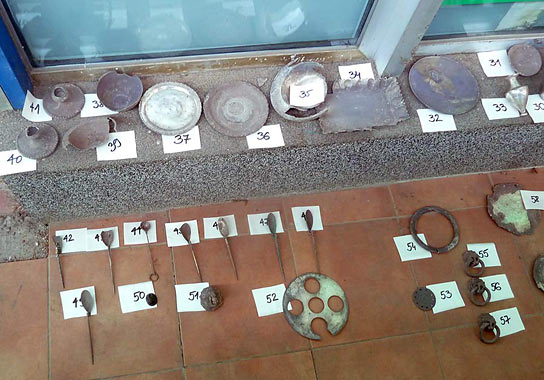Facts About Vinkovci Treasure
The Vinkovci Treasure, also known as the Cibalae Treasure, is a stunning collection of late Roman silver artifacts discovered in Vinkovci, Croatia, in March 2012. This remarkable hoard comprises 48 items weighing approximately 36 kilograms, featuring an array of domestic utensils and tableware with intricate designs and detailed depictions. Experts believe these treasures were crafted locally in Vinkovci during the late 4th century AD. The treasure was unearthed during construction work and has since been exhibited in Vinkovci and the Museum of Arts and Crafts in Zagreb, with conservation efforts funded by the Croatian government.
The discovery was made by Geoarheo, an archaeological company, under the supervision of archaeologist Šime Vrkić, at a construction site in Vinkovci's heritage zone. The artifacts were found in a storage pit, carefully placed within a pottery bowl buried about 70 centimeters underground. Among the items are plates, bowls, jugs, cups, and spoons, some of which are gilded or decorated with niello and engraved with motifs of animals, plants, buildings, and human figures. The hoard's significance is tied to the turbulent period of Roman history during which it was buried, suggesting it was hidden during a time of insecurity in the region.
While the quality of the items is regarded as good, though not exceptional, they reflect the wealth and craftsmanship of Vinkovci during that era. The Vinkovci Treasure is often compared to other treasures from the same period found in Hungary, England, and Switzerland. The Croatian Ministry of Culture is funding the conservation efforts, with the artifacts being treated in Zagreb to address corrosion and damage. Once conservation is complete, the items will be permanently displayed at the City Museum in Vinkovci, aiming to attract visitors and highlight the town's rich historical significance.

 Slovenia
Slovenia